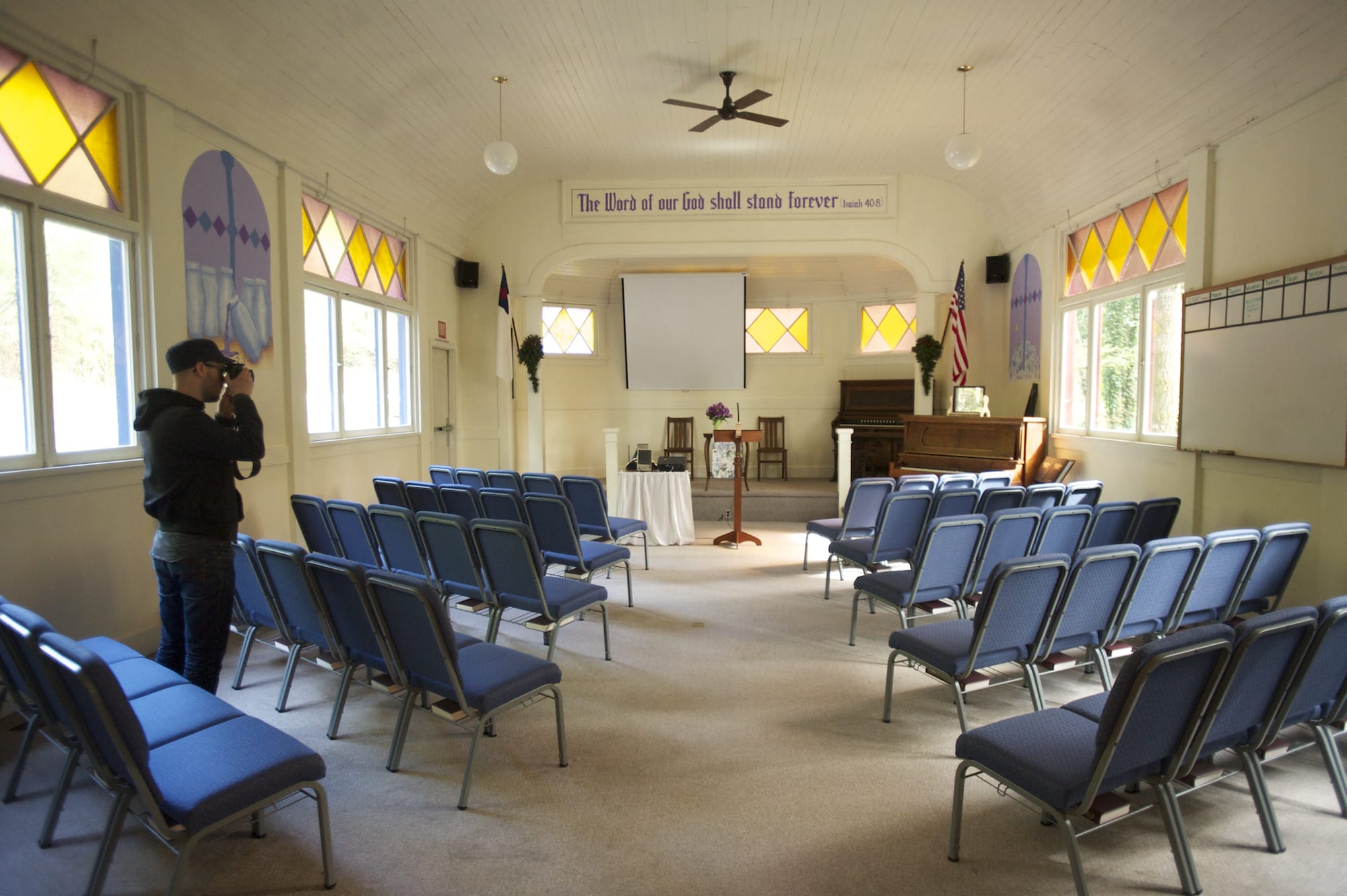What: Community potluck. Robert Carlberg, a Swedish college student who is doing a photographic project on Venersborg, is also interested in information about its early Swedish settlers.
When: 5 to 7 p.m. today.
Where: Venersborg School, 24309 N.E. 209th St., about 7 miles east of Battle Ground.
Information: www.venersborg.blogspot.com.
VENERSBORG — The Venersborg Church is nestled in a clearing, its white steeple dwarfed by towering trees. It’s the embodiment of a peaceful countryside. But for people who came here from Sweden in 1909, it was the adventure of their lives.
Moving into a place they only knew through sales brochures, they literally were colonists — part of the Swedish Land & Colonization Co.
Now the origins of the “koloni,” as they called it in a 1911 newsletter, are getting a fresh telling. Venersborg residents have had a chance to share family stories with Robert Carlberg, a college student from Sweden.
What: Community potluck. Robert Carlberg, a Swedish college student who is doing a photographic project on Venersborg, is also interested in information about its early Swedish settlers.
When: 5 to 7 p.m. today.
Where: Venersborg School, 24309 N.E. 209th St., about 7 miles east of Battle Ground.
Information: www.venersborg.blogspot.com.
Carlberg is doing a photo project on Venersborg, a destination for some of the 200,000 or so Swedes who came to the United States between 1900 and 1910.
“I’m trying to imagine how that would be,” Carlberg said. He drew a clear line between the Swedes who stayed home a century ago and those who headed for new opportunities.
“They were the most adventurous ones,” Carlberg said. “They didn’t know what they faced.”
Even if the newcomers thought they knew what was in store, Tom Moberg said, they were wrong.
Moberg is a third-generation Venersborg resident whose grandparents on both sides were among the first settlers; the names of the Forsgrens and the Mobergs are on the original land contract.
Jonas Forsgren was a self-described serf, who had to leave Sweden if he wanted a better life for his family.
When Forsgren and the others saw a chance for a new start in the colony, they took it.
“They bought it sight unseen,” Moberg said as he gave Carlberg a tour of the century-old Venersborg Church, 7 miles east of Battle Ground.
“Poor guys: They tried to farm it,” he said.
It was typical of the land parcels bought up by development companies around the turn of the last century. The Swedish Land & Colonization Co. marketed it as excellent farmland. The sales pitch was delivered in Swedish, on posters and other street-level advertising formats in all the major immigration entry points in the eastern United States.
When Moberg’s ancestors cleared the stumps and then tried to farm their rocky acreage, their agricultural plans didn’t last long.
“The topsoil was this deep,” Moberg said, holding his thumb and forefinger less than an inch apart.
Moberg said he’s seen century-old photographs of the first few crops of corn and wheat. The first year, the corn was shoulder-high; the second year, it was waist-high; the third year, the corn was knee-high.
They noticed that other farmers around Clark County were having great success with fruit orchards. Before long, hundreds of acres around Venersborg were planted with prune, apple and pear trees, Moberg said.
They built wood-fired fruit driers and organized a cannery association.
Meanwhile, there were families to raise and a community to nurture. Tom Moberg’s mother described some of that process in 1959 during a celebration of Venersborg’s 50th anniversary.
In Esther Moberg’s hand-penned history, she noted how the first teacher, Miss Louise Peterson, welcomed 34 children when the Venersborg school opened in 1912. They ranged in age from 5 to 16, and many didn’t speak English.
If the Venersborg kids wanted to go to high school, they had to go to Battle Ground. That meant riding to school on horseback or finding a place in Battle Ground to stay during the week, she wrote.
In 1922, a road between Venersborg and Battle Ground was graded — but not gravelled — and three families went in on a Ford touring car to serve as a school bus.
The community got electricity in 1929, noted Esther Moberg.
The retired teacher, who died in 2000 at age 92, was proof that Jonas Forsgren made the right decision by emigrating.
According to Tom Moberg, his grandfather was attending Esther’s college graduation when he observed: “Only in America could a serf’s daughter achieve this.”




